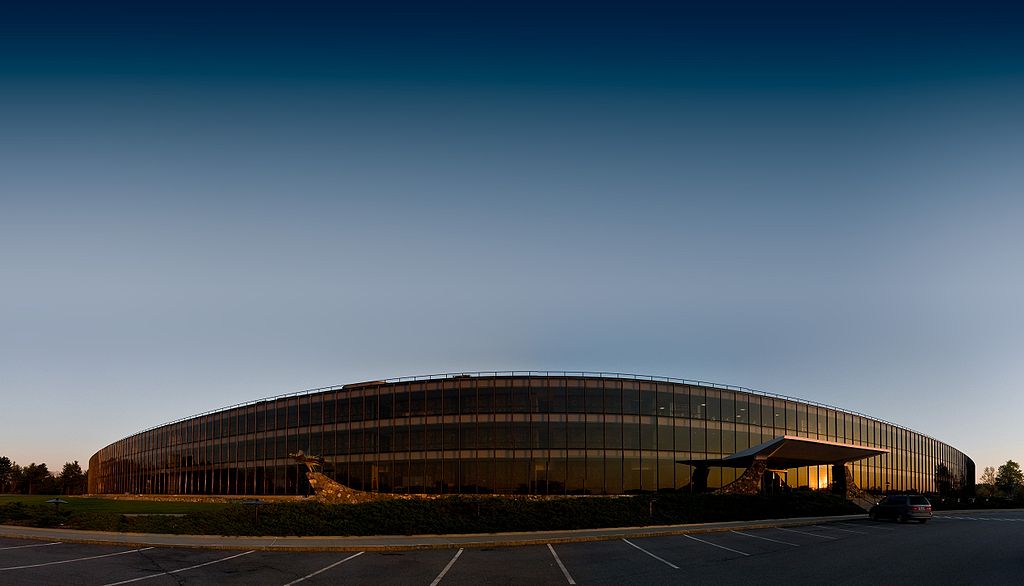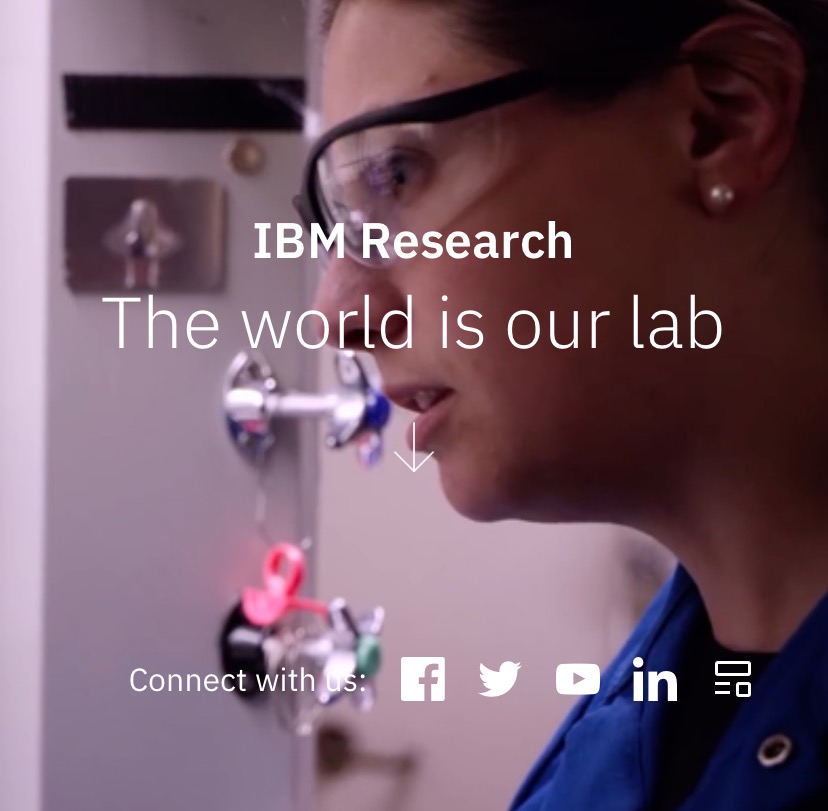2020. 1. 16. 09:01ㆍ4차 산업혁명/AI


IBM연구소라는 존재도 몰랐습니다
'세상이 우리의 실험실이다' 멋있다!
일단 핸드폰 화면에 관련 링크를 첨부하고
2020년 AI5대 전망이라는 발표자료 원문을 보고
의역한자료를 봅니다
정재승 교수님의 열두발자국에 AI수준은 초코머핀과 강아지를 구분하지 못한다고 했는데 이것도 이제 옛말인가봅니다

2020년 AI 5대전망(IBM연구소)
1. AI will understand more, so it can do more: The more data AI systems have, the faster they will get better. But AI’s need for data can pose a problem for some businesses and organizations that have less data than others. That doesn’t mean they can’t count on the support of AI. During the coming year, more AI systems will begin to rely on “neuro-symbolic” technology that combines learning and logic. Neuro-symbolic is the ticket to breakthroughs in technologies for NLP, helping computers better understand human language and conversations by incorporating common sense reasoning and domain knowledge. Such breakthroughs will soon help businesses deploy more conversational automated customer care and technical support tools – while requiring much less data to train the AI.
AI 뉴로 심볼릭 기술
AI 시스템이 더 많은 데이터를 가질수록 AI 기술은 더 빠르게 발전한다. 2020년에는 보다 많은 AI 시스템이 학습과 논리를 결합한 “뉴로-심볼릭(neuro-symbolic)” 기술에 의존하기 시작할 것이다. 뉴로-심볼릭은 자연어 처리 기술 분야 발전에 중요한 지표로, 컴퓨터가 상식 추론과 특정 분야의 지식을 활용해 인간의 언어와 대화를 보다 잘 이해하도록 돕는다. 이와 같은 기술을 통해 기업들은 대화 형식의 자동화된 고객 관리와 기술 지원 툴을 사용할 수 있게 될 것이다. 또한 더 적은 데이터로도 AI를 훈련시킬 수 있게 될 것이다.
2. AI won’t take your job, but it will change how you work: AI will continue to impact the workplace for years to come. But the fear that humans will lose their jobs to machines is unjustified. Rather, AI will transform the way people work, through automation. New research from the MIT-IBM Watson AI Lab shows that AI will increasingly help us with tasks such as scheduling, but will have a less direct impact on jobs that require skills such as design expertise and industrial strategy. Expect workers in 2020 to begin seeing these effects as AI makes its way into workplaces around the world; employers have to start adapting job roles, while employees should focus on expanding their skills.
인간 역량강화
AI는 인간의 일자리를 대체하는 것이 아니라, 자동화를 통해 일하는 방식을 변화시킬 전망이다. AI는 일정 조율과 같은 업무에는 도움을 주지만, 디자인이나 전략 수립과 같은 전문적 업무에는 직접적인 영향을 주지 않을 것으로 예상된다. AI를 도입한 기업은 직원 업무를 일부 조정할 필요가 있으며, 직원은 역량 강화를 위해 노력해야 한다.
3. AI will engineer AI for trust: To trust AI, these systems have to be reliable, fair, and accountable. We have to ensure that the public can be certain that the technology is secure and that its conclusions or recommendations aren’t biased or manipulated. During 2020, components that regulate trustworthiness will be interwoven into the fabric of the AI lifecycle to help us build, test, run, monitor, and certify AI applications for trust, not just performance. Just like with the rise of AutoAI – the use of AI to create AI – we’ll see the rise of AI to govern AI. This adoption will create trustworthy AI workflows across industries, especially those that are heavily regulated.
AI 제어, 신뢰할 수 있는 AI
AI를 신뢰하기 위해서는 시스템이 믿을 수 있고 공정해야 한다. 더불어, 기술이 보안상 안전하고 AI가 제공하는 결론이나 제안이 편향되거나 조작되지 않다는 것을 확신할 수 있어야 한다. 2020년에는 신뢰도를 규제하는 구성 요소들이 AI의 수명주기에 포함, AI 애플리케이션 구축, 테스트, 운영, 모니터링 및 인증하는 과정에서 성능뿐 아니라 신뢰도 역시 고려될 것이다. 또한, AI를 만드는데 AI를 사용하는 ‘오토AI’처럼 AI를 제어하는 AI가 부상할 전망이다. 이를 통해, 규제가 심한 산업을 포함해 산업 전반에서 신뢰할 수 있는 AI 워크플로우가 형성될 것이다.
4. AI’s appetite for energy demands greener tech: Data centers are the linchpins of our modern world – we rely on them for everything from enterprise computing to social media and streaming our favorite movies. They are also the underpinning of artificial intelligence and account for as much as 2% of the world’s total energy use. Demand for cloud computing and AI won’t go away, so expect to see increased efforts in 2020 that look to make AI tech more sustainable. This includes creating new materials, like “transition-metal oxides” that make more flexible devices, new chip designs with both analog and mixed-signal processing, and new software techniques based on approximate computing, that all aim to support growing AI workloads while reducing its carbon footprint.
AI 전력수요 대응 친환경 기술
AI의 기반이 되는 데이터센터는 전세계 에너지 총 소비량의 약 2%를 차지하고 있다. 2020년에는 AI 기술을 보다 오랫동안 지속 가능하게 만들기 위한 노력들이 증가할 것이다. 더 유연한 기기를 만들 수 있는 ‘전이 금속 산화물(transition-metal oxides)’과 같은 신소재 개발이나, 아날로그와 혼합 신호를 모두 처리하는 새로운 칩 설계, 매우 적은 컴퓨팅 파워로 구동하면서 일정 수준 이상의 결과를 구현하는 근사 컴퓨팅(approximate computing) 기반의 새로운 소프트웨어 기술 등이 해당한다. 이 모두는 탄소 배출량을 줄이면서도 증가하는 AI 관련 워크로드를 지원하기 위한 방안이다.
5. AI-powered lab assistants will discover new materials: For more than two centuries, the synthesis of organic molecules has been one of the key aspects of research in industrial chemistry. As a result, the world has life-saving drugs and synthetic fibers. Yet, researchers still struggle to map the hundreds of thousands of possible reactions when creating different molecules. The sheer volume of information means it’s possible for a scientist to remember a few dozen reactions in their field, but it’s impossible to be an expert in everything. Now, they may not have to. IBM has developed an AI tool that can predict millions of chemical reactions – both backwards and forwards – as well as synthesize molecules in the cloud – it’s called RXN for Chemistry (try it today). Expect 2020 to deliver significant growth in harnessing the power of AI and automation to spur breakthroughs in material discovery and development.
신약/신소재 개발
지난 200년 동안 유기 분자 합성은 화학 분야 연구의 중요한 축이었고, 이를 통해 의약품 및 합성 섬유가 개발되었다. 지금도 새로운 분자를 만들기 위해 수십만 가지의 화학 반응을 연구하고 있다. 과학자들은 전문 분야의 수십 가지 반응은 기억할 수 있지만, 방대한 양의 정보로 인해 모든 분야의 전문가가 되는 것은 불가능하다. 이제 그 한계를 넘어설 수 있게 되었다. IBM이 클라우드 상에서 분자를 합성할 수 있고, 수백만 가지의 화학 전후 반응을 예측할 수 있는 AI 도구인 RXN 포 케미스트리(RXN for Chemistry)를 개발했다. 이를 통해 2020년에는 AI와 자동화 기술을 활용한 신소재 발견 및 개발에 획기적인 발전이 이루어질 것으로 기대하고 있다.
'4차 산업혁명 > AI' 카테고리의 다른 글
| 천리안 위성 발사? 나만 몰랐음! (0) | 2020.02.29 |
|---|---|
| 마이크로소프트 2020 기술정책 이슈 (0) | 2020.01.28 |
| 중고휴대폰 판매 시스템... AI? (0) | 2020.01.14 |
| 미네르바스쿨(Minerva School) 이런곳이군! (0) | 2020.01.12 |
| 인공지능 정책! (1) | 2019.12.23 |